|
|
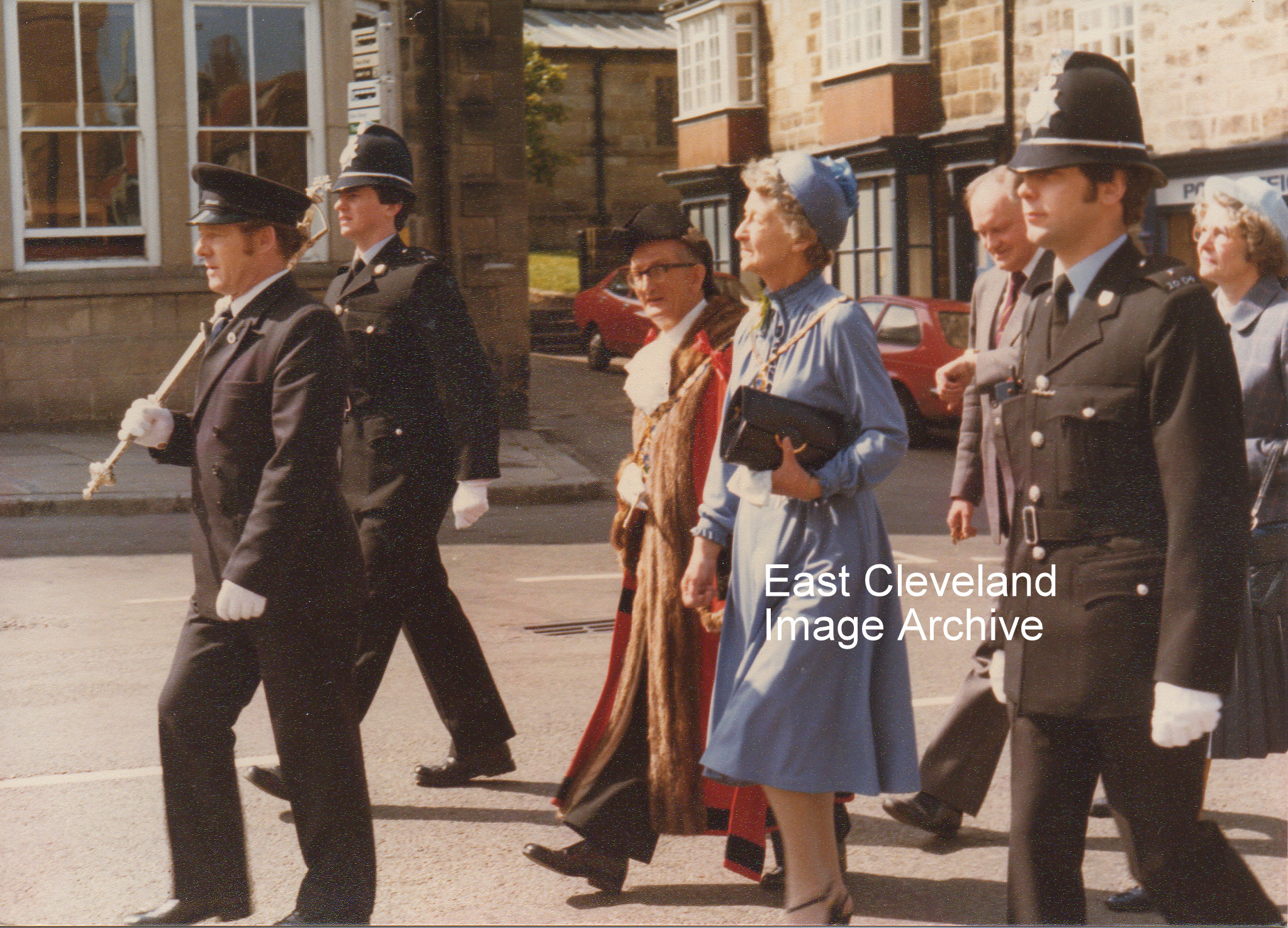
The mayoral Parade passing through the Market Place en-route to the Arlington Methodist Chapel; Ray Tough tells us: “Terry, the mayor’s attendant leading the mayoral possession with the new mayor of Langbaurgh Borough Council; Norman Lantsbery and his mayoress Hilda Barwick followed by Mr Middleham and I think his wife.”
Image courtesy of Loftus Town Council and thanks to Ray Tough for the update.
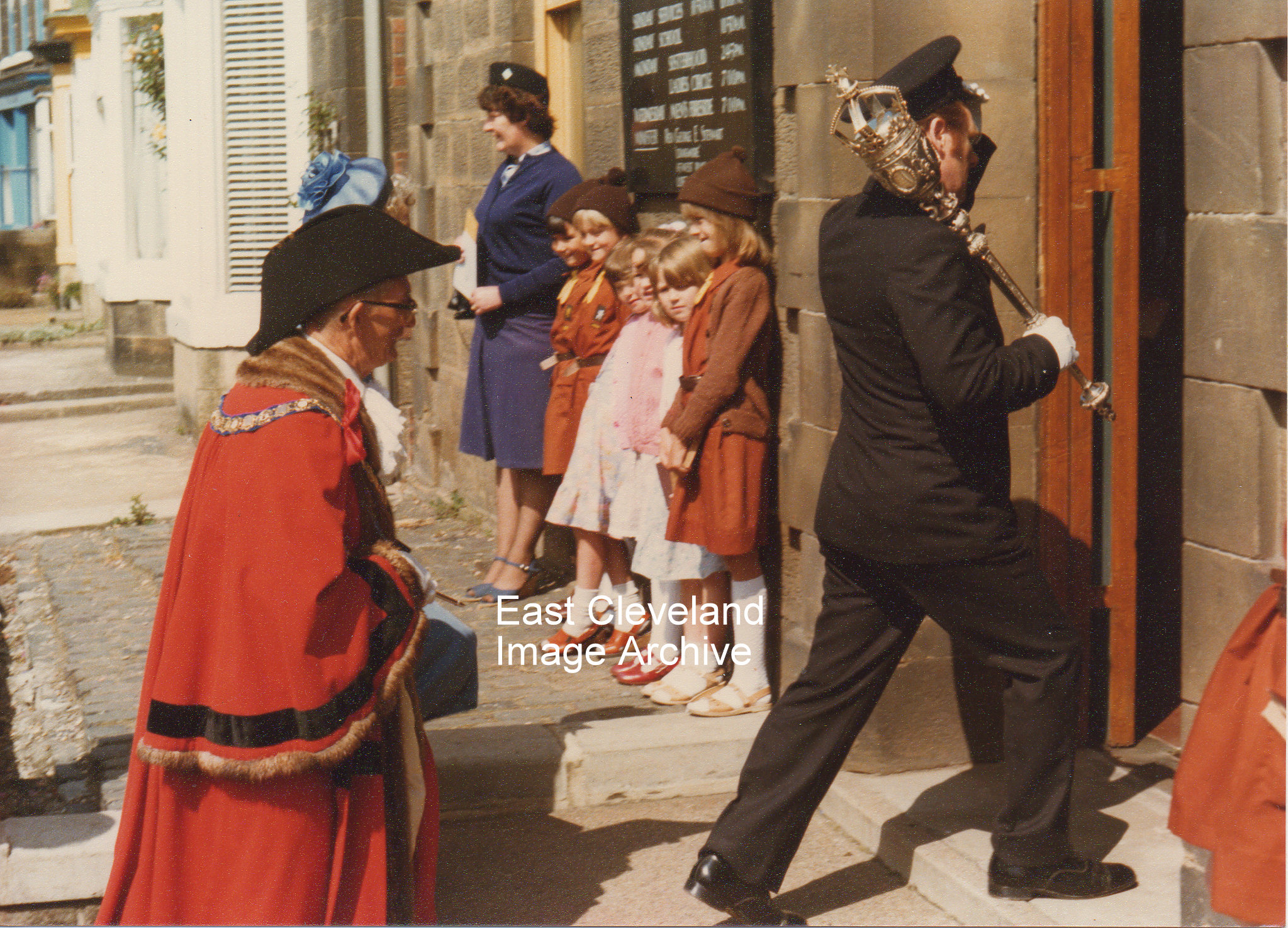
Were you one of the Brownies standing outside the Arlington Chapel?
Image courtesy of Loftus Town Council.
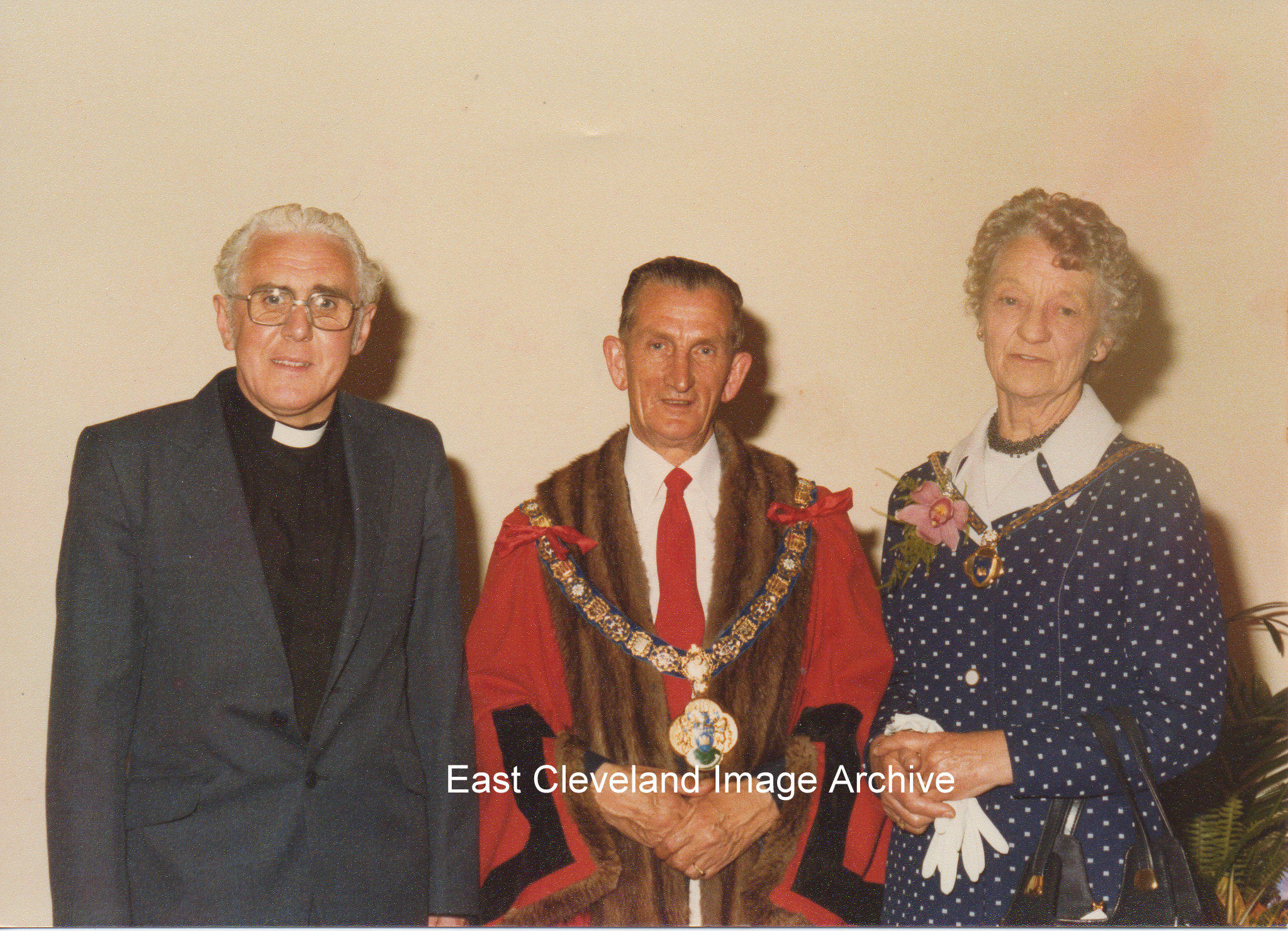
Norman now having been inducted as Mayor; Ray tough advised: “Pictured is Hilda Barwick Norman’s mayoress and the parson of Arlington Chapel for Norman’s Mayoral Church Service.”
Image courtesy of Loftus Town Council and thanks to Ray Tough for the update.
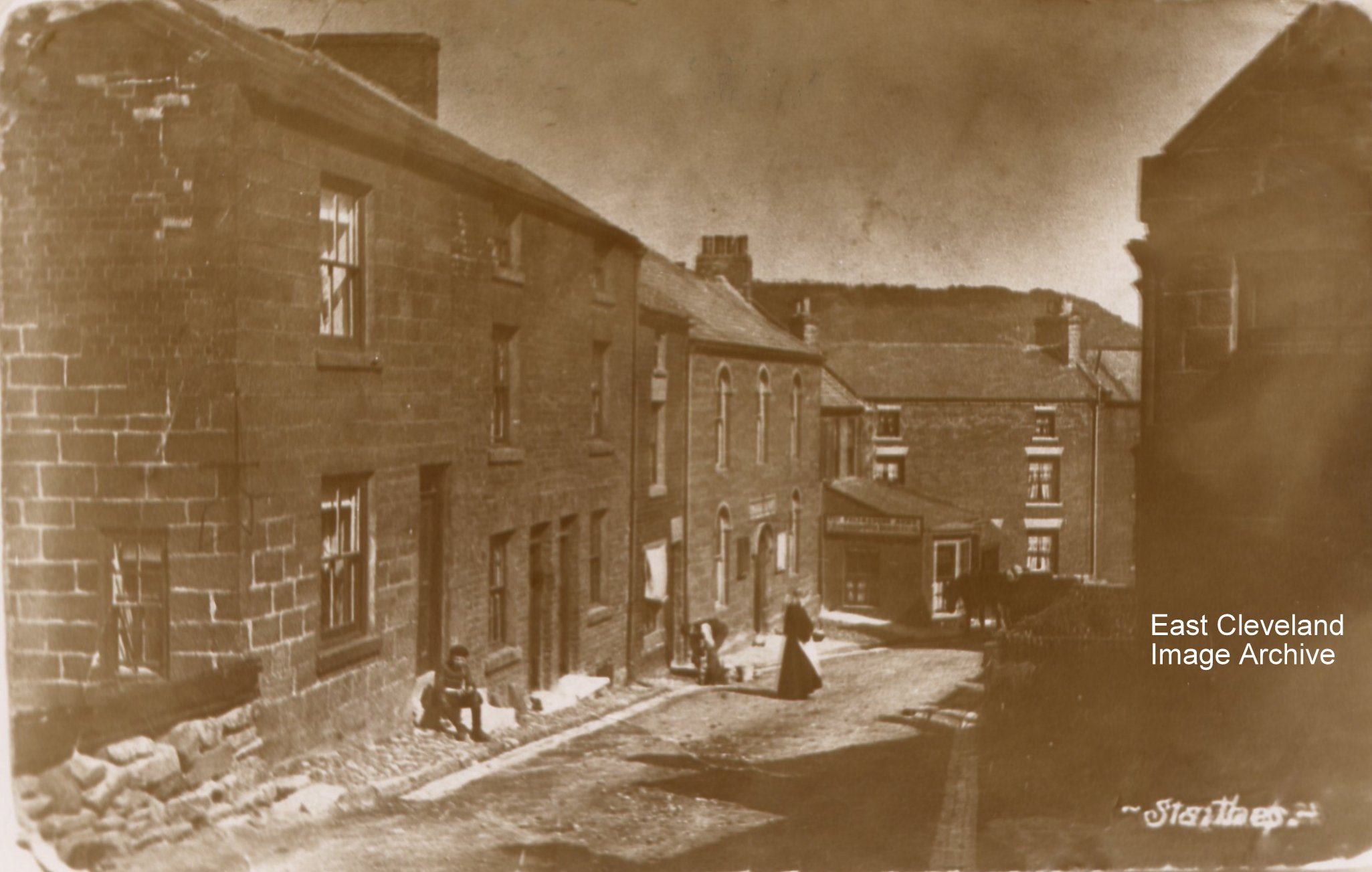
A lovely shot of old Staithes, from a postcard dating from the early 1900’s; another place that never changes.
Image courtesy of the Pem Holliday Collection.
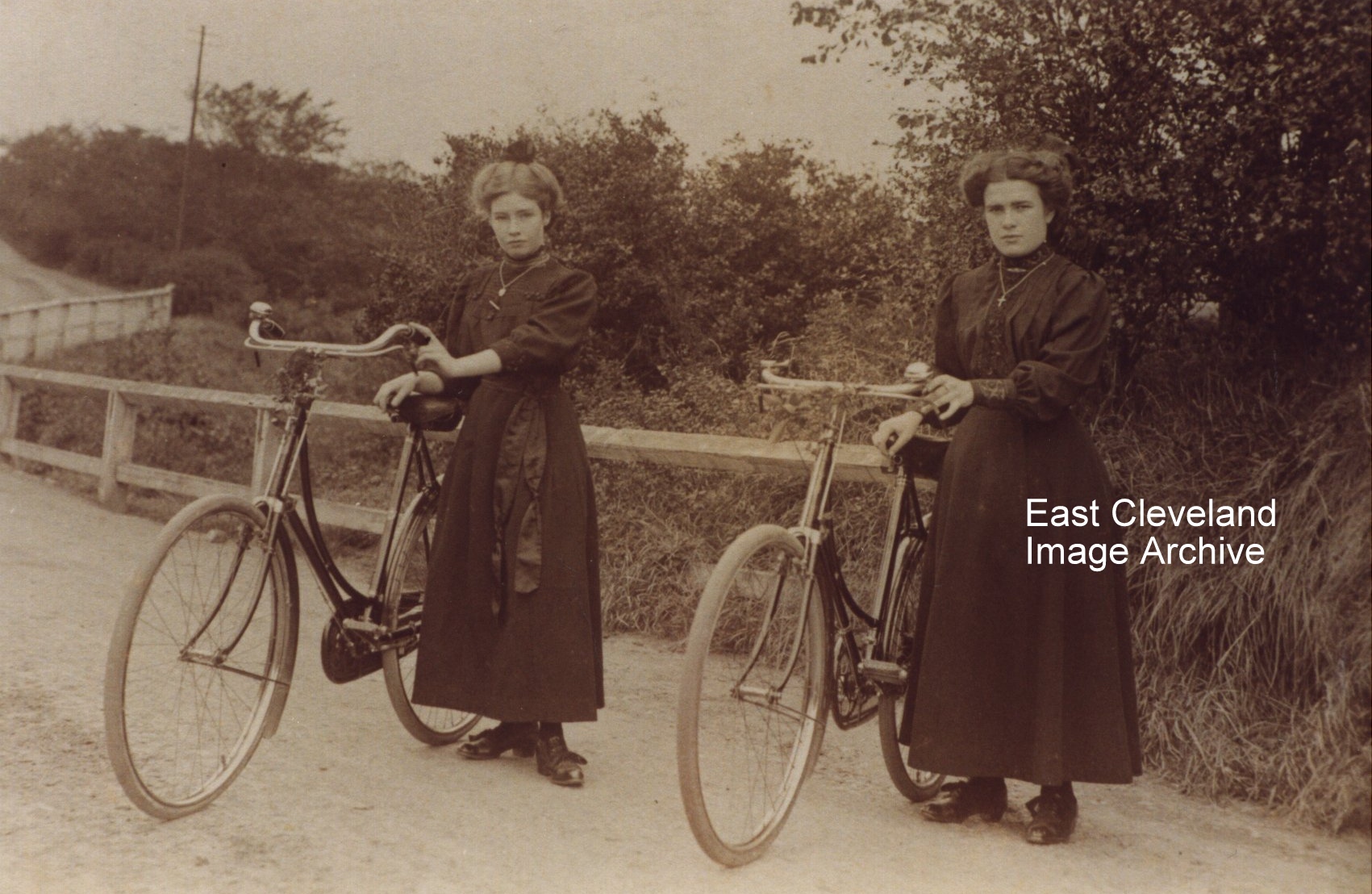
Looks like the girls have both got new bicycles, but how did they ride them in those long dresses? Annie and Mary Hudson lived at 3 Dixon Street, Carlin How and their father John William Hudson (listed in the 1911 Census) was a Deputy Overman at Bells Pit; their mother Louisa, sister Ivy and brothers Alfred and William. The Hudson family had lived for some years in Bells Huts, which would be close to where this photograph was taken. Derick Pearson advises us that this photograph was taken: ”on Kilton Lane near Carlin How, looking from the Kilton Lane allotment entrance towards where the pylon now stands in what used to be ”Miller Jim’s” field on the right; at the entrance to the old Texas Playingfields on the left going toward Carlin How.” Both lived for many years afterwards, with Mary living in Redcar till her death in 1965 and Annie also living in Redcar until her death in 1973. A further image of the Hudson sisters with their mother and grandmother has been made available to the Archive and will shortly be displayed.
Image from a collection complied for an exhibition in Carlin How in 198os by Derick Pearson, supplementary information from Census information on Ancestry and Find My Past; also many thanks to Derick for the update on location.
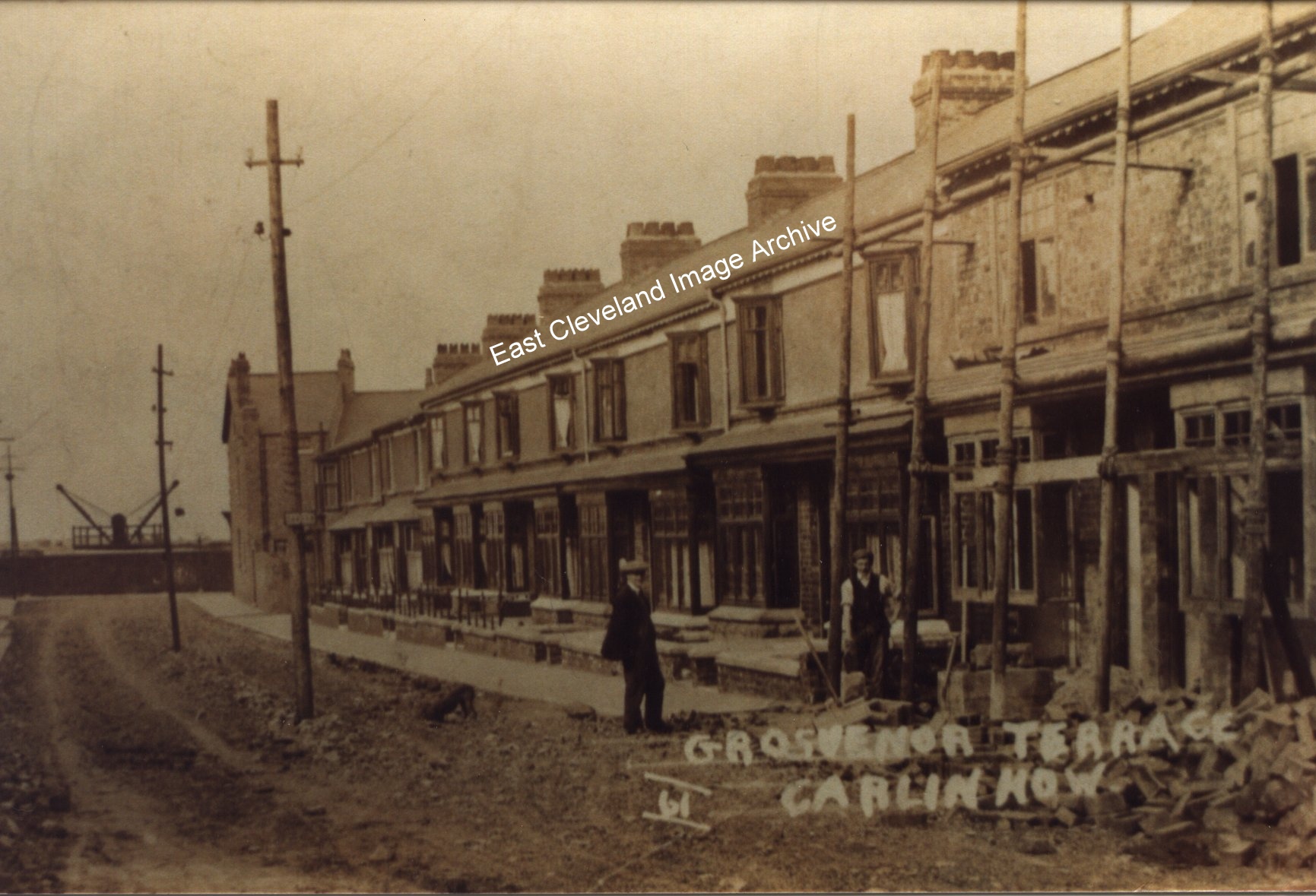
Initially the Archive noted this picture of Grosvenor Terrace in 1911 appeared to show completion of the terrace. However Alan Pearson advised: “This would only be completion of the half of Grosvenor Terrace up to Stan Massey’s house. The 1915 Ordnance Survey map seems to show the top half still uncompleted, although Queen Street, Coronation Street, and part of Gladstone Street are there by then”. However the image also provoked discussions; Derick Pearson advised: “Note the heavy gauge wood scaffolding that was used in those days. It took a lot more putting together than the man today could with a couple of spanners hung in his side pods and a handful of ready-made clips “. Eric Johnson also commented: ” I noticed the ‘double’ jib crane, in the background of the photograph, which appears to be inside the works. I have some knowledge of steelworks machinery, but this construction puzzles me”. Derick Pearson assisted with: “I have only seen this once before at Warrenby Steelworks in the mid 1960s. It was mounted on a long bed railway truck. It was not a Jib Crane, but a different configuration altogether. Now if it was on a truck as the one I saw at Warrenby, could it have been Railway equipment? More importantly, there were differing dates for the filling in of the viaduct and the work which went on around the lower lines under the viaduct, but as this is 1911 it could well have played a part in that work as the work was not complete until 1913 according to most sources. When the photo is zoomed in, one can clearly see lifted loads on both sides. The one on the right is high up about the height of the center rope drum top and the one on the left just above the sleeper fence/wall. Is it what might be called a Double Derrick type”. The Archive asks can anybody help in identifying the gentlemen in the photograph?
Image from a collection compiled by Derick Pearson; thanks to Eric Johnson, Derick Pearson and Alan Pearson for the updates.
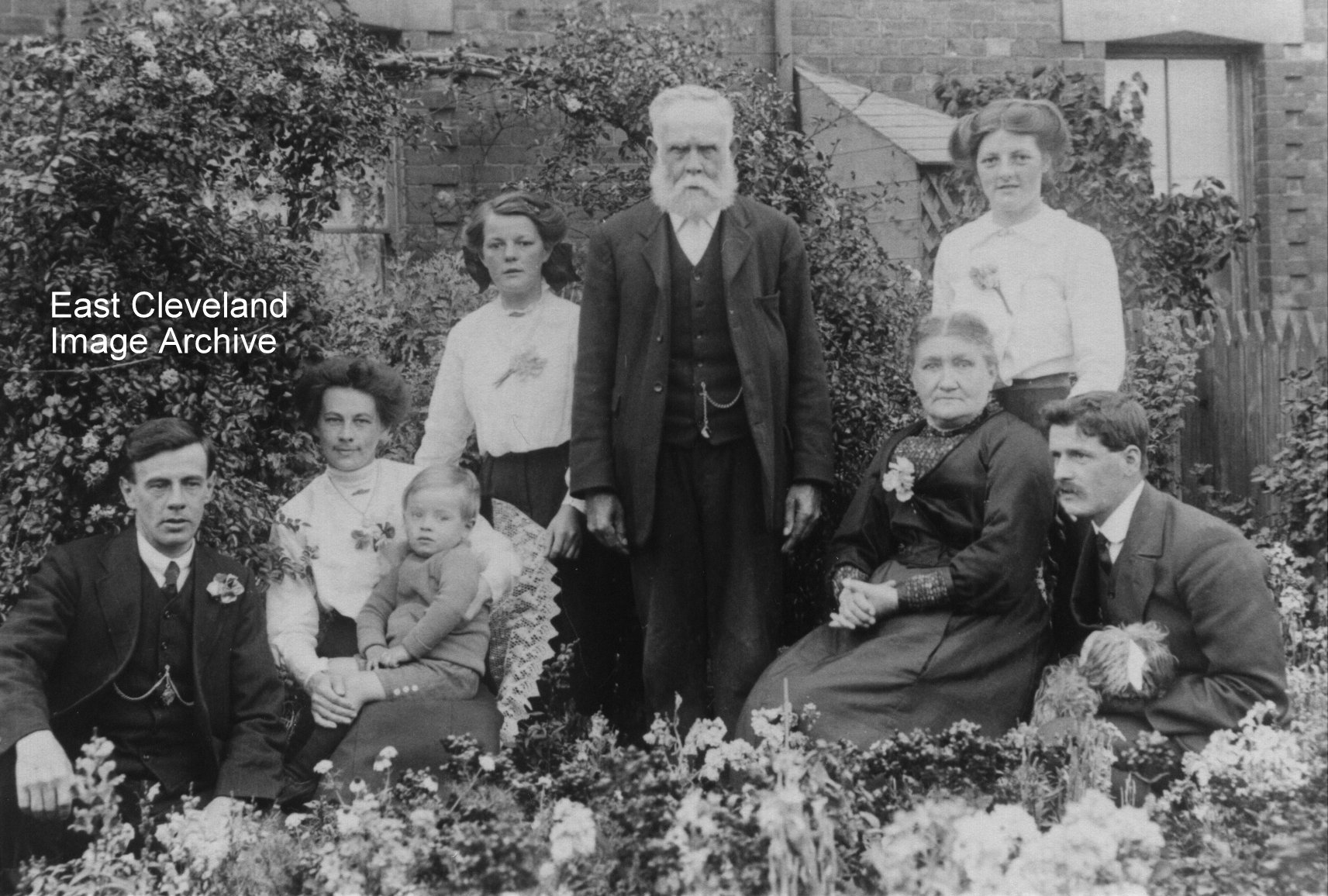
Knowing the title of this photograph was only part of the story; George Tremain advised us: “This photograph shows Charles Hall in the early 1900’s with his wife Margaret Elizabeth (nee Ord) Hall. They are in the garden of their house in Front Street, Carlin How where they were living at the time of the photograph. Also on the photograph I believe is their daughter Clara (Hall) Nicholson and her husband Fred Nicholson. The small boy is their son Lesley Nicholson. The two young ladies are I believe Emily Jemson (behind Margaret) and Mary Jemson (my grandmother) beside Charles Hall.” Researches by the Archive using the 1911 Census indicate that Charles and Margaret Hall lived at 7 Front Street, Carlin How; their daughter Clara and husband Fred lived at 2 Kennedy Crescent. At that time Clara and Fred had been married for two years and had no children, so giving a date to this image of 1914 or 1915.
Image from a collection by Derick Pearson and information supplied by George Tremain.
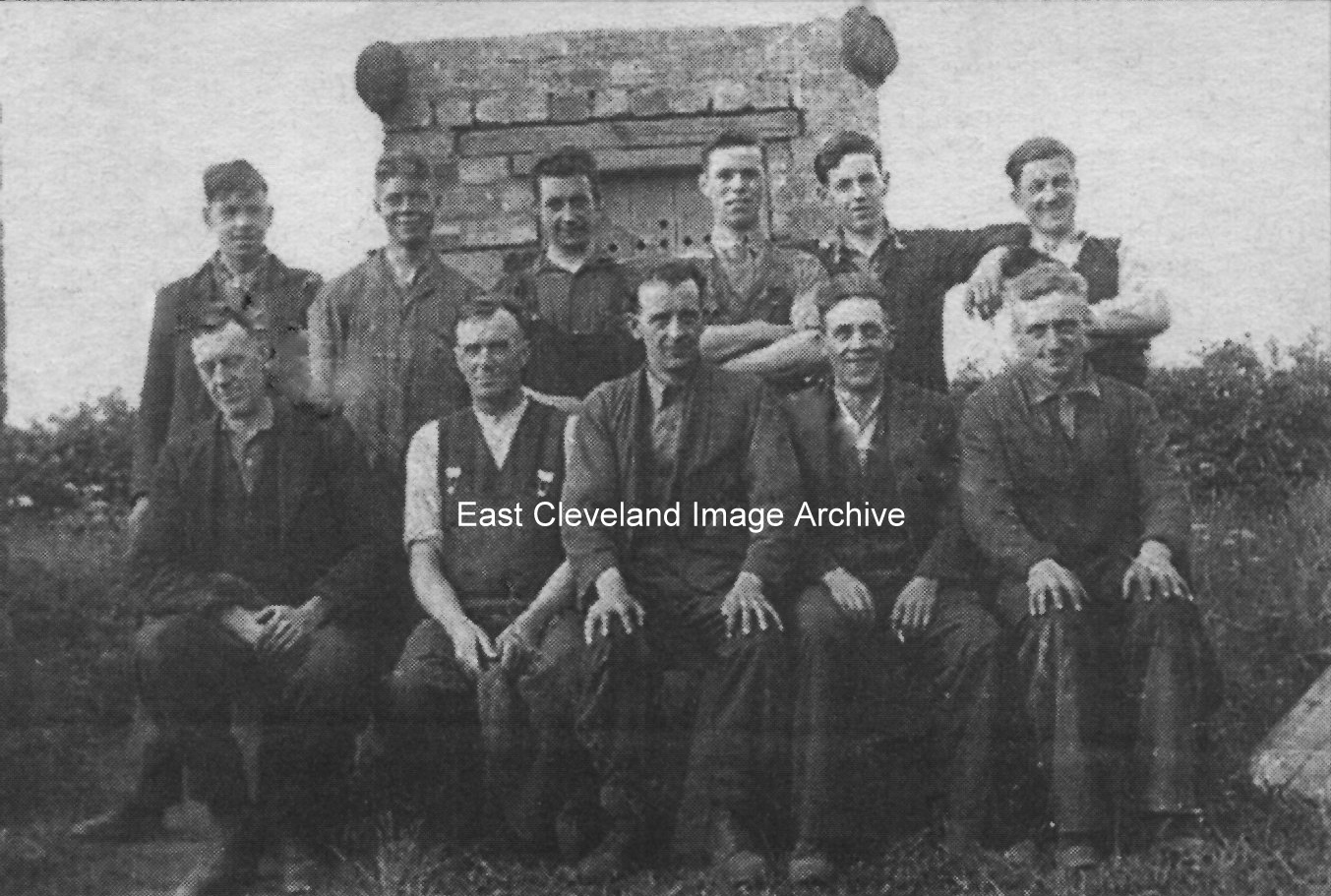
The image is taken from an Evening Gazette ‘Remember When’ article from a newspaper cutting of 1940 and shows the surface workers. Some can be identified from the article: but can anybody assist with additional names?
Back Row: ?? , Percy Gott, ?? , Les Marsay, ?? , ?? .
Front Row: ?? , Bert Hicks, ?? , Bill Young, ?? .
The cutting came from a collection compiled by Derick Pearson.
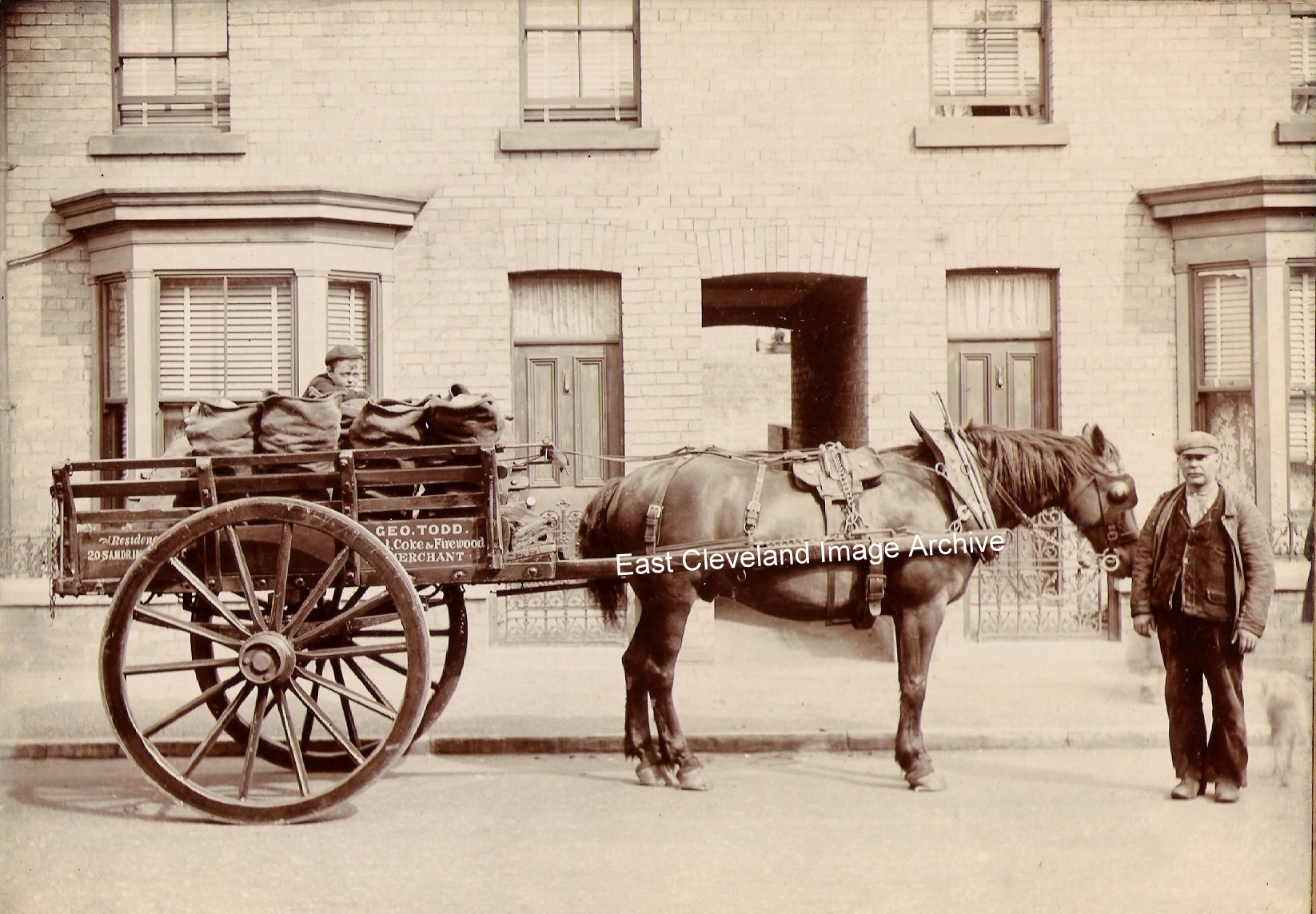
Who the devil is George Todd we hear you ask! Norman Patton can tell you in his own words: ”George Todd traveled to North Skelton with his parents and several brothers from Rillington near Malton around 1870. They took up residence at No 17, Richard Street, North Skelton and, of course, found work in the local pit. This can all be verified by examining the 1891 census for Skelton. George’s dad had been a platelayer; probably connected with the new railway construction and George himself had an unsurprising affinity with horses which helped him to find his first job at the pit as a horse driver.” In the picture, George is about 40 years old and it can be seen from the writing on the cart that he is a Coal Merchant operating his own business out of 20 Sandringham Street, in Scarborough. He was by then married and had a daughter who would be about 8 years old. The picture was taken in 1900 and the lad is Lawrence Todd, George’s nephew, who would have been holidaying with his Aunt and Uncle George. In the 1901 census, Lawrence aged 9 years is living at 17 Richard Street with his other uncle and his grandmother. Lawrence eventually began work in the North Skelton mine and eventually became the ”Check weigh man”, Union man and subsequently a Skelton Town Councillor. Sadly, George’s wife died young and possibly in childbirth. George struggled with his business and young daughter and soon returned to Cleveland and back to the pit!” Those of you who know the Archive well enough know that it has a passion for Family History and one of the axioms we keep preaching is that Family History must tell a story. The Archive was taken by this photograph (which has been made younger only by removing some of the browning that age causes) and by Norman’s storyline. So we make no apologies for reproducing it in full – it gives a fascinating insight into a beautiful photograph! Norman Patton also tells us ”I now believe this picture to have been taken in Wykeham Street in Scarborough.”
Many thanks to Norman Patton for the story and the update.
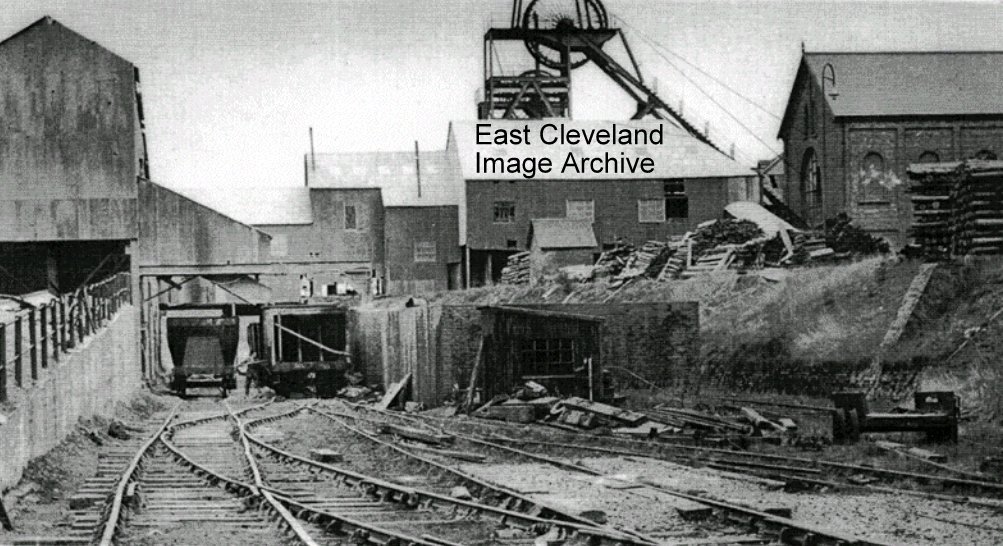
A very busy looking photograph of Lingdale mine; looking down the ore loading track, picking belt to the left. Downcast shaft with the big wheels and beside it the engine house, lots to see here.
|
|










Recent Comments